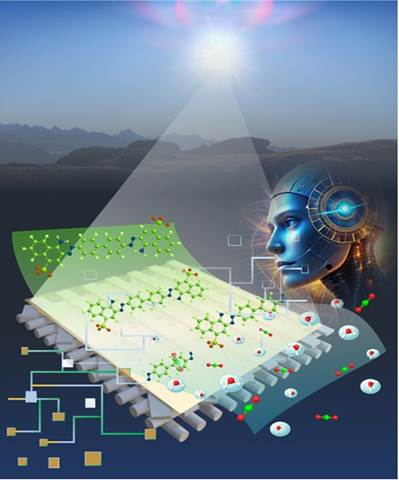A new innovation cleans water with the help of Sunlight, Vibration and Artificial Intelligence (AI), enables Bio-degradable, Eco-friendly and Low-cost Technology
A new innovation cleans water with the help of Sunlight, Vibration and Artificial Intelligence (AI), enables Bio-degradable, Eco-friendly and Low-cost Technology
We may soon have a water filter that not only traps pollutants but also destroys them, using sunlight, gentle vibrations, and a slight help from artificial intelligence (AI).
Many industries — from textiles to pharmaceuticals — dump wastewater laced with harmful dyes like Methylene Blue and Congo Red into the environment. These pollutants do not just discolour water, they pose serious risks to ecosystems and human health, leading to skin problems, respiratory diseases, and more. Current solutions involve physical and chemical oxidation techniques, like electrochemical, ozone, and related methods are energy intensive and which require expensive chemicals making them hazardous for the environment.
A team of researchers at the Institute of Nanoscience and Technology (INST) in Mohali, an autonomous institute of the Department of Science and Technology (DST) have designed a 3D-printed scaffold made from biodegradable polylactic acid (PLA) which is known for piezo-photocatalytic properties.
Onto this scaffold, Dr Aviru Basu coated a special material called Bismuth Ferrite (BiFeO₃), a catalyst known for its ability to break down pollutants when exposed to light and mechanical energy.
This combination of Scaffold & Catalyst published in the journal Nano Energy (Elsevier) enables a powerful process called piezo-photocatalysis, where both sunlight and tiny vibrations help activate the catalyst. Even on cloudy days, the vibrations ensure that the cleaning does not stop. This is a smart solution to the limitations of traditional solar-powered purification.

Fig This illustrates the sunlight-activated piezo-photocatalysis of a BiFeO₃-coated 3D-printed PLA substrate, effectively degrading dye using a powerful combination of sustainable solar energy, advanced catalysis, and predictive machine learning for environmental remediation.
The scientists have also trained machine learning models — using tools like Artificial Neural Networks — to predict how well the system would perform under different conditions. The models achieved accuracy scores of up to 99%, helping the team fine-tune their system for maximum efficiency.
The hybrid system removed 98.9% of Congo Red (CR) and 74.3% of Methylene Blue (MB) from wastewater samples surpassing current high-end treatment methods.
The innovation is biodegradable and eco-friendly, low-cost and reusable, avoids waste and excessive chemical use and is highly efficient and scalable. It is ready for adaptation in various industries and even remote communities and powered by renewables harnessing sunlight and vibrations instead of fossil fuels.
For making this possible, the researchers synthesised the BFO nanoparticle catalyst via a sol-gel method, developed 3D printing of PLA scaffolds, carried out coating and testing for dye degradation and developed Machine learning models to predict performance.